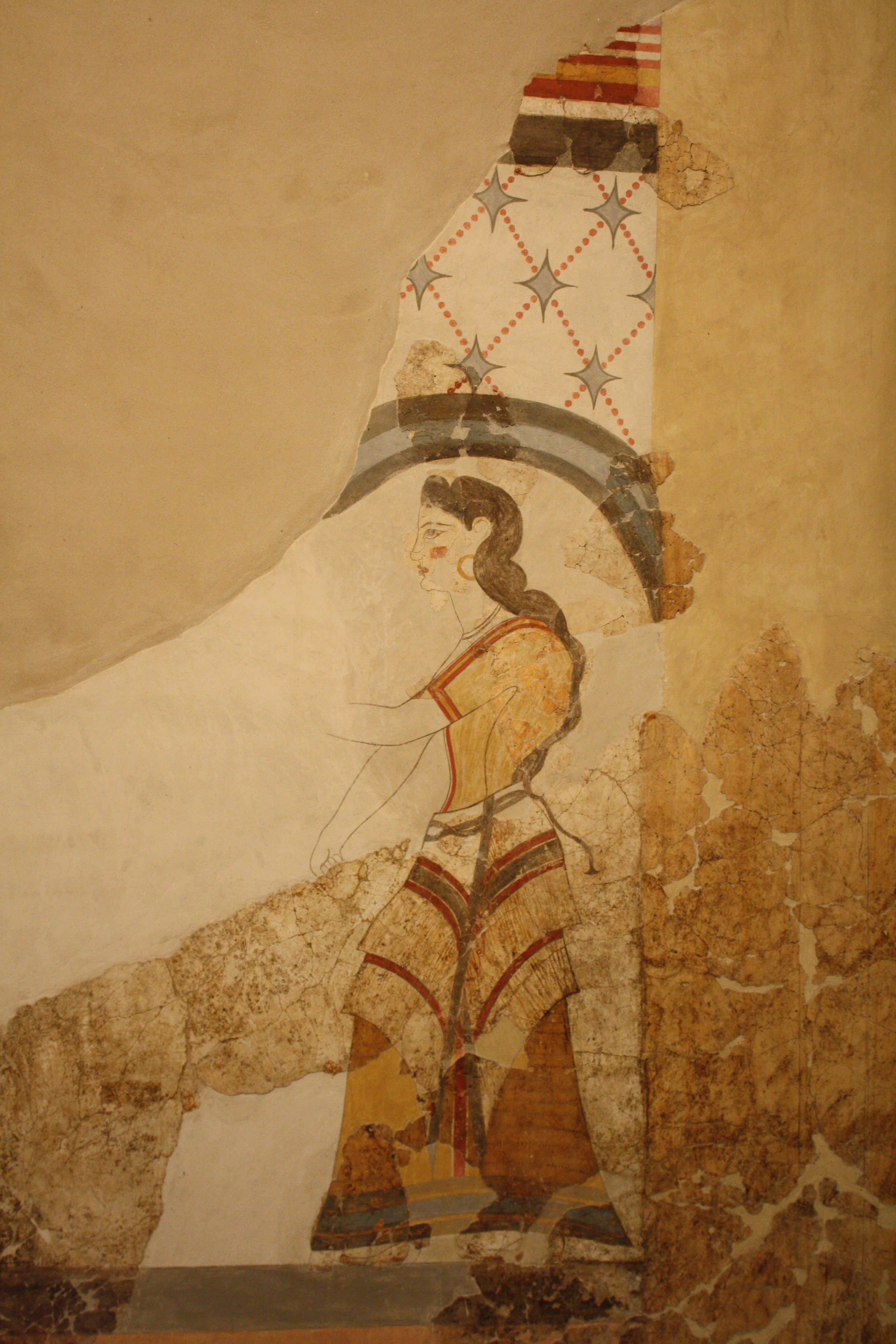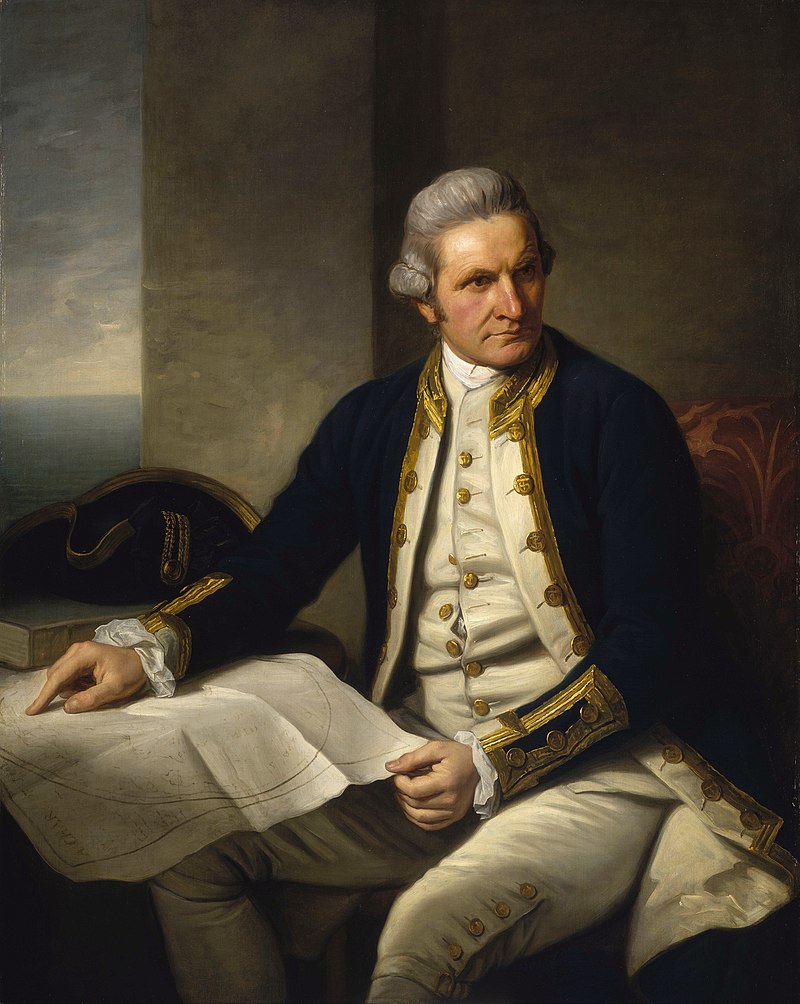Otherwise known as the "weaving a large polychrome textile is not feasible for me, so let's think outside that box" hypothesis.
Most studies of patterned Minoan and Mycenaean textiles tend to focus on textiles with patterns woven into them, because weaving does seem to have been an important method of producing patterned textiles. The weaving techniques used involved brocades made with supplementary threads, and probably also tapestry. But weaving is only one of several ways to create patterned cloth, and in fact we know from the Linear B evidence that textiles frequently had decorative elements applied after they were woven.
The reason for this is that not all textiles were woven on-site at the palace administrative centers, and the weavers had a range of different skill levels. Woven fabric came from a variety of sources, because in the Bronze Age taxes were paid in labour or in commodities like cloth. Polychrome weaving demands a very high level of technical ability, especially for the kind of designs attested on Aegean frescoes, and quality could not be guaranteed when the weaving process happened outside the palace. The solution was to get weavers to produce plain cloth and then decorate it using a separate finishing process at the palace, where quality could be assured.
Presumably cloth woven at Knossos and other palace sites was made by specialists and involved advanced techniques, such as brocaded patterns.
The process of adding value to plain cloth was carried out by specialised workers listed in the Linear B tablets. Men were employed as fullers, while a-ka-te-ri-ja and o-nu-ke-ja were women whose job was to decorate finished cloth. o-nu-ke (
onukhes probably) literally means fingernails or claws, but in a textile context it means wool-based decorative elements applied to cloth. It may therefore be the Mycenaean term for embroidery, or perhaps fringed trim applied to garments.
Embroidery was used across Europe and the Near East in the Bronze Age. Considering Greece's extensive trade links with the Near East, and the influence of Near Eastern traditions on Greek textile production known from the first millennium, I don't think it's unreasonable to expect Near Eastern-type embroidery in Greece.
Interestingly, one of the Akrotiri frescoes shows a piece of cloth decorated with dashed lines that may indicate running stitch. However, these dashed lines may also represent carnelian beads.
Textiles decorated with beads and other sewn-on ornaments appear to have been popular. Large numbers of small gold foil shapes, like these ones from Mycenae, have been found in Mycenaean tombs. They appear to have been sewn on to textiles, and would be a very effective way to add value to plain fabric.
Another method of adding value to plain textiles, which is clearly shown in Minoan and Mycenaean art, is the use of decorative bands and fringes. The women on the Aghia Triada sarcophagus (pictured below) wear dresses made of plain cloth, ornamented with with coloured bands which appear to have been sewn onto the finished garment. These bands could be fairly ornate, like
the one from Tyrins I copied a couple of years ago. Making and applying such bands may have been the job of the workers known as o-nu-ke-ja (
onukheiai).
 |
| Image of the Aghia Triada sarcophagus from Wikimedia. |
Evans also suggested the possibility that Minoan and Mycenaean textiles may have been painted or block printed. There are, in fact, examples of painted textiles from ancient Egypt, but these appear to have been associated with funerary contexts rather than clothing for living people.
It's not entirely clear whether this sort of added value process also characterised the Minoan textile production model. Minoan textile production didn't operate in exactly the same way as the Mycenaean system reflected in the Linear B archives, but the scholarly consensus is that the Mycenaean system developed from the earlier Minoan model. When the Mycenaeans took over Crete, they simply used and adapted the infrastructure that was already in place. Therefore, the two systems had a number of similarities, particularly in the sense that cloth was delivered to the administrative centers but not necessarily made there.
The Minoan system appears to have been a little less centralised, meaning cloth was even less likely to have been made in a palace workshop staffed by experts. However, the Minoans had extensive international trade networks, beginning around 2700 BCE. It's reasonable to expect this trade included textiles which would have needed to meet a consistent quality standard, so the assumption that Minoan cloth sometimes started life plain and was finished at Knossos is consistent with our understanding of Minoan textile production.
I don’t wish to downplay the importance of patterned weaving in the Minoan and Mycenaean textile industries. There’s plenty of evidence to show it was important. What I’m saying is that when we consider the Linear B texts it becomes clear weaving was not the only method used to create patterned textiles, and therefore it is not the only method we should consider when trying to reconstruct Bronze Age textiles.
References
Abdel-Kareem, O. et al. 2008. "Conservation of a Rare Painted Ancient Egyptian Textile Object from the Egyptian Museum in Cairo".
e-PreservationScience 5, 9-16.
Alberti, M. E. 2007. "The Minoan Textile Industry and the Territory from Neopalatial to Mycenaean Times: Some First Thoughts".
Creta Antica 8. 243.
Barber, E. 1991.
Prehistoric Textiles: The Development of Cloth in the Neolithic and Bronze Ages with Special Reference to the Aegean. Princeton (NJ): Princeton University Press.
Casson, L. 1991.
The Ancient Mariners: Seafarers and Sea Fighters of the Mediterranean in Ancient Times (2nd edition). Princeton (NJ): Princeton University Press.
Evans, A. 1921.
The Palace of Minos. London: MacMillan & co.
You can download it here.
Gleba, M. 2017. "Tracing textile cultures of Italy and Greece in the early first millennium BC".
Antiquity, Volume 91, Issue 359, pp. 1205-1222
Available here.
Immerwahr, S. A. 1990.
Aegean Painting in the Bronze Age. University Park (PA): The Pennsylvania State University Press.
Laffineur, R. & Betancourt, P. P. (eds) 1997.
TEXNH: Craftsmen, Craftswomen, and Craftsmanship in the Aegean Bronze Age. Philadelphia: Temple University.
Nosch, M. L. 2014 "The Aegean Wool Economies of the Bronze Age".
Textile Society of America Symposium Proceedings. 900. http://digitalcommons.unl.edu/tsaconf/900
Nosch, M. L. (ed) 2014.
Prehistoric, Ancient Near Eastern, and Aegean Textiles and Dress. Oxford: Oxbow Books Limited.
Nosch, M.L. & Laffineur, R. (eds) 2012.
KOSMOS: Jewellery, Adornment, and Textiles in the Aegean Bronze Age. Leuven: Peeters Publishers.
Nosch, M. L. & Gillis, C. (eds) 2007.
Ancient Textiles: Production, Crafts and Society. Oxford: Oxbow Books Limited.
Ortiz-Garcia, J. 2017. "Painting on Linen Cloth in Antiquity: Shrouds from Roman Egypt as a Source for Research".
Textile: Cloth and Cultutre, Volume 15, Issue 1, pp. 34-47.
Ventriss, M. & Chadwick, J. 1959.
Documents in Mycenaean Greek. Cambridge: Cambridge University Press.
Or download it here.





















